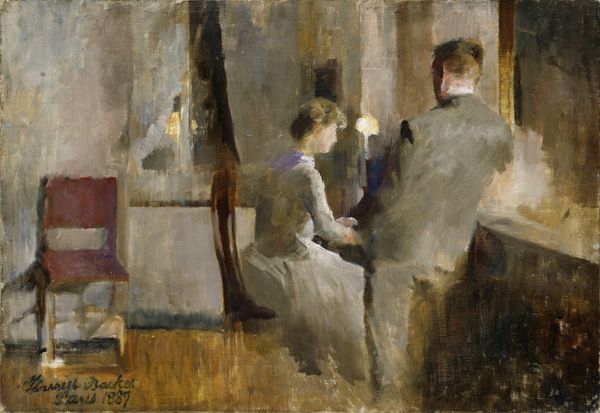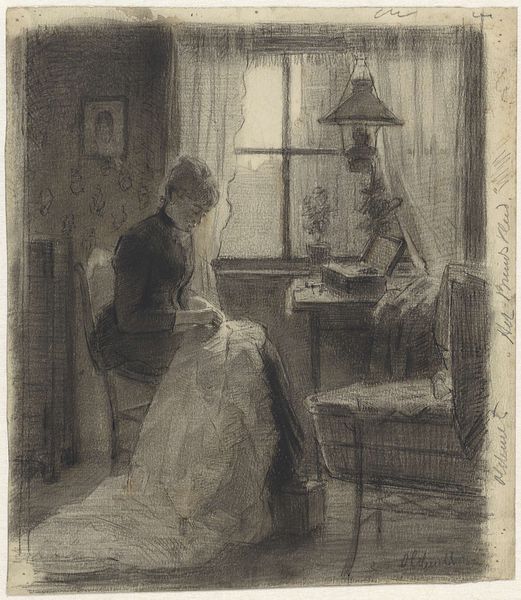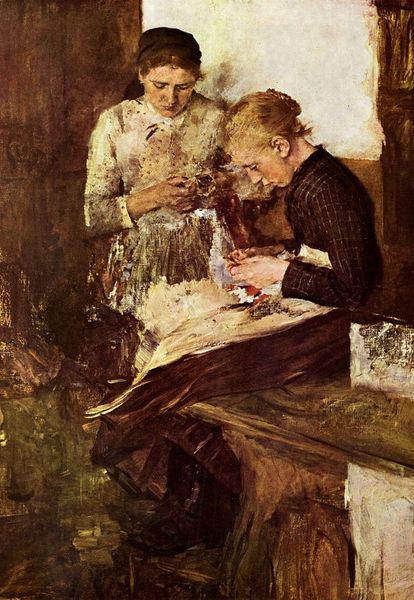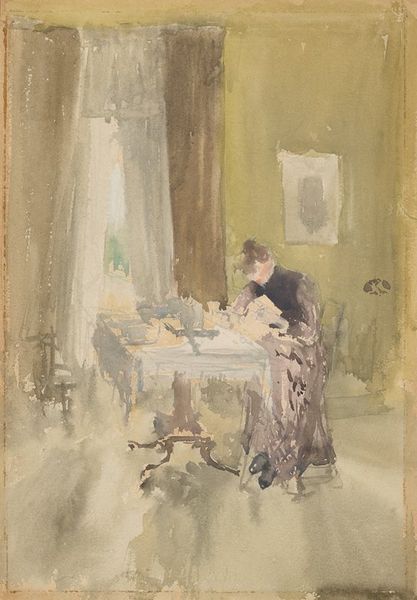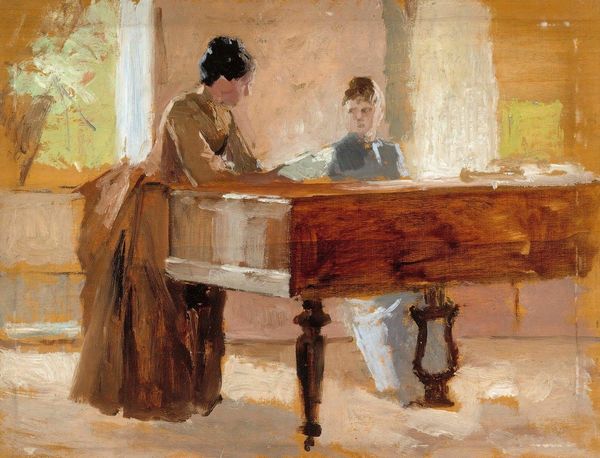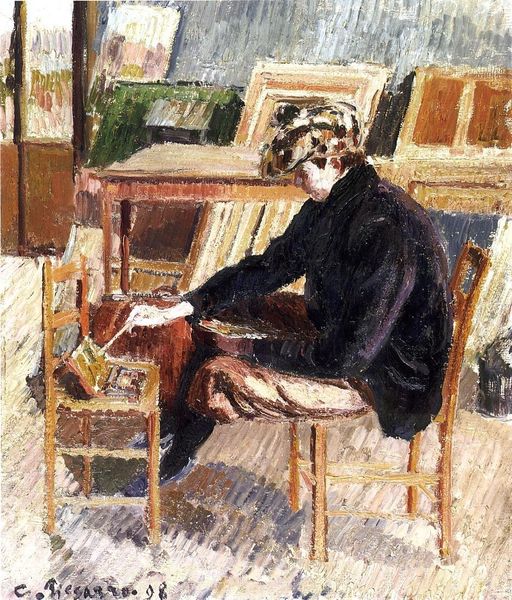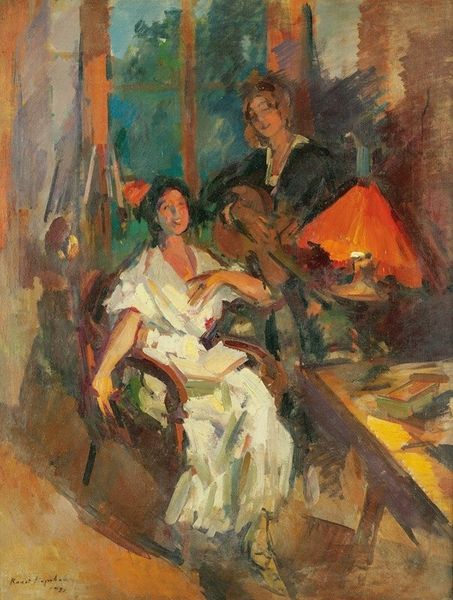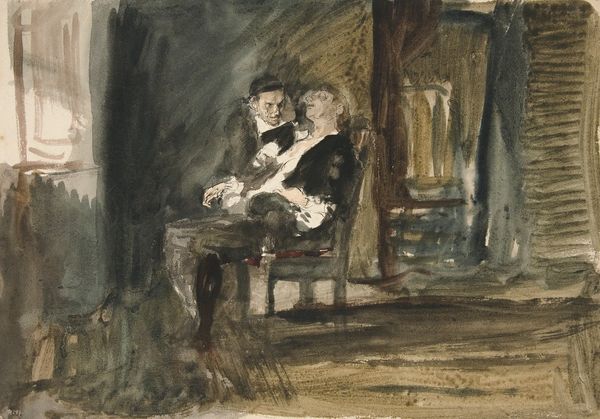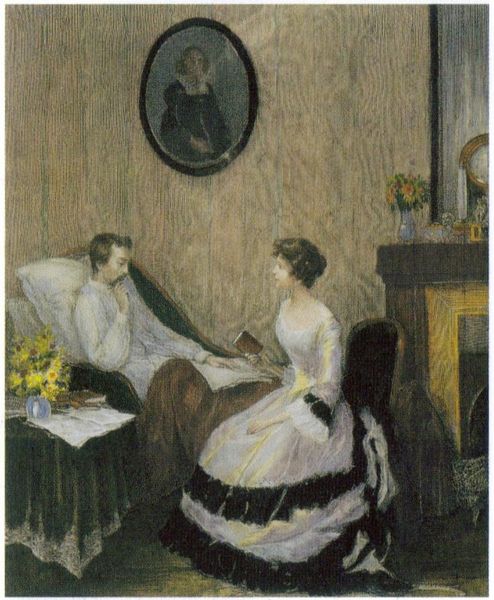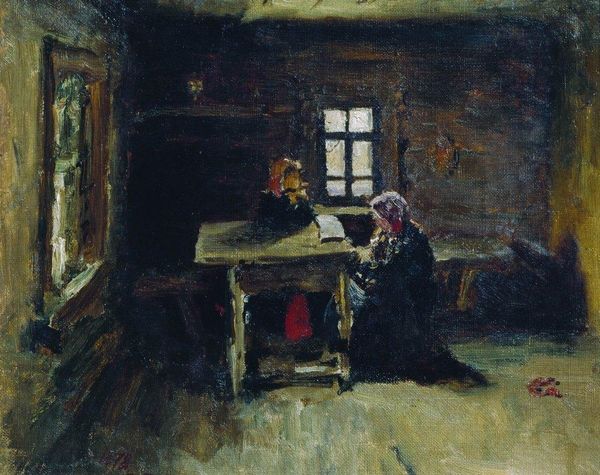
painting, oil-paint
#
portrait
#
painting
#
oil-paint
#
figuration
#
oil painting
#
genre-painting
#
modernism
Dimensions: painted surface: 27.9 x 25.4 cm (11 x 10 in.) support: 33.2 x 28.7 cm (13 1/16 x 11 5/16 in.)
Copyright: National Gallery of Art: CC0 1.0
Editor: So, here we have Mark Rothko's "Conversation," painted around 1932 using oil. It's interesting how muted the palette is. The browns and grays create quite an austere feeling. The composition almost feels like a stage, with the two figures placed carefully. What visual cues stand out to you? Curator: The brushwork, undeniably. Notice the application of paint, the almost frantic, textural quality? Each stroke, however subdued in color, contributes to a dynamism that belies the apparent stillness of the scene. The formal arrangement directs our eye— the angle of the man's posture mirroring that of the table edge, the seated figure a solid block which acts as a terminus. Editor: I see what you mean. The table does create a very distinct foreground. Do you think that contributes to how grounded the image feels? Curator: Indeed. And consider the implied geometry – the verticals of the window and chair played against the horizontal plane of the table. Even the limited color palette serves a structural function, organizing the visual space into distinct yet interconnected zones. Observe, too, how the absence of strong tonal contrasts allows the textural details to take precedence. Editor: It’s almost like Rothko is presenting the raw act of seeing, the materiality of the oil on canvas taking centre stage. I wouldn't necessarily consider this artwork austere now. Curator: Precisely. Instead, observe its intrinsic, formal qualities. That focus alone may provide us more clues about its affect and creation. Editor: I will keep that in mind. Thanks, this has really opened my eyes to appreciating its artistry beyond the surface.
Comments
No comments
Be the first to comment and join the conversation on the ultimate creative platform.

